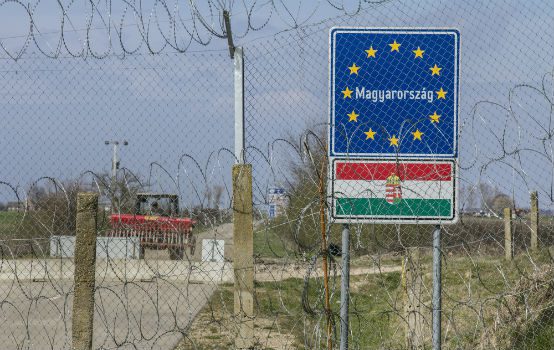Open Borders? The EU Has Hundreds of Miles of Walls

If you voted for Donald Trump on the basis of a three-word, three-syllable chant, it was probably “we will win,” “lock her up,” or “build the wall.” Regarding the latter, proponents of less immigration have reason to be frustrated. Prior to the midterm elections, the Republican-held presidency, Senate, and House barely moved an inch on the construction of Trump’s promised border wall. And following the Democratic takeover of the House, Trump must now contend with additional court cases and budget disputes.
The debate surrounding immigration contains truisms that both sides need to recognize.
Advocates in favor of immigration—myself included—need to understand that bad incentives (by way of welfare benefits) have created a situation that makes people take very dangerous routes through deserts and rivers in pursuit of better livelihoods, risking their lives and those of their children. This is just as true in the United States as it is in Europe. Governments are overwhelmed with the large numbers filings for refugee status, often inaccurately so they can get in.
On the other hand, those who oppose immigration should recognize that it is natural for parents to seek better futures for their children, and that their quest to do so is not in itself an immoral act. A more difficult acknowledgement involves crime. Data on crimes committed by illegal immigrants is flimsy at best, even though some researchers have shown that illegal immigration does not increase violent crime rates and that undocumented immigration has not increased the prevalence of drug or alcohol problems. (Though good research showing that immigrants are less prone to crime than natives is unfortunately almost 20 years old.)
Again, a lack of data makes conclusions at times speculative. But pretending that there is a definitive answer tilting unequivocally towards one side or the other doesn’t do any good. If, as a conservative, your conclusion is that “more immigrants mean more crime,” then it’s difficult to stand your ground against “more guns mean more crime,” for example.
The truth is that barriers to legal immigration are very high. Unless you’re a famous athlete, highly educated, a refugee, or you win the very odd green card lottery, living and working in the United States remains a far-fetched bureaucratic fantasy. This is as true for people from Latin and South America as it is for Europeans and Australians.
With a booming economy and the need for labor, the U.S. should look towards a more comprehensive and streamlined immigration process. But the average opponent of Trump’s border wall in the United States is likely to hold in high regard Europe’s supposed free movement of people. That, however, would be incorrect.
The EU’s free movement of people is guaranteed through the Schengen Agreement, which is a must for EU members (with exceptions) but as a treaty is not bound to the EU itself (Switzerland, for example, is a member of the Schengen zone as well). Schengen requires signatory countries to waive all border checks, allowing people to travel freely, but it does not mean that people can stay as long as they like. Restrictions do apply. There’s a distinction between free movement of people, which grants EU citizens the right to live and work wherever they choose in the EU, and Schengen, which gets rid of internal border controls between participating countries.
In order to ensure the free movement of people, Brussels implements policies that protect borders with non-EU countries as well as those with natural borders. By 2027, the EU is set to add an additional 10,000 personnel to its existing border and coast guard. National and EU coast guards force ships from North Africa to turn around, and arrest and detain people for attempting to gain access to Europe. The detention of migrants in fenced-off facilities, as well as the imprisonment of lone migrant children, is as much a debate in Europe as it is in the United States.
And yes, the EU builds fences and walls. On the border between Hungary (EU member state), Croatia (EU member state), and Serbia (non-member state) stands a 13-feet-high, 325-mile-long border fence, at a cost of over $100 million. (The EU reimbursed Hungary for half that amount.) The fence is secured with barbed wire and is often electrified. Similar to the Hungarian border fence is the barrier between Greece and North Macedonia, which stretches 19 miles.
In Spain stand the Melilla and Ceuta border fences. The latter is 20 feet high, 5.2 miles long, and was built in 1995. Bulgaria has sent 600 military personnel to its 169-mile border with Turkey, in support of its own fence there. The EU has even provided Turkey with $90 million for security and surveillance technology at its border wall with Syria, including funds for the purchase of armored military vehicles to patrol it, as reported by Der Spiegel. Approximately 34,000 migrants have died on EU borders since 1993, according to one estimate.
The only difference between European border walls and American fences is that Europe’s seem to be cheaper. That, however, is not a great distinction.
Bill Wirtz comments on European politics and policy in English, French, and German. His work has appeared in Newsweek, the Washington Examiner, CityAM, Le Monde, Le Figaro, and Die Welt.
Comments